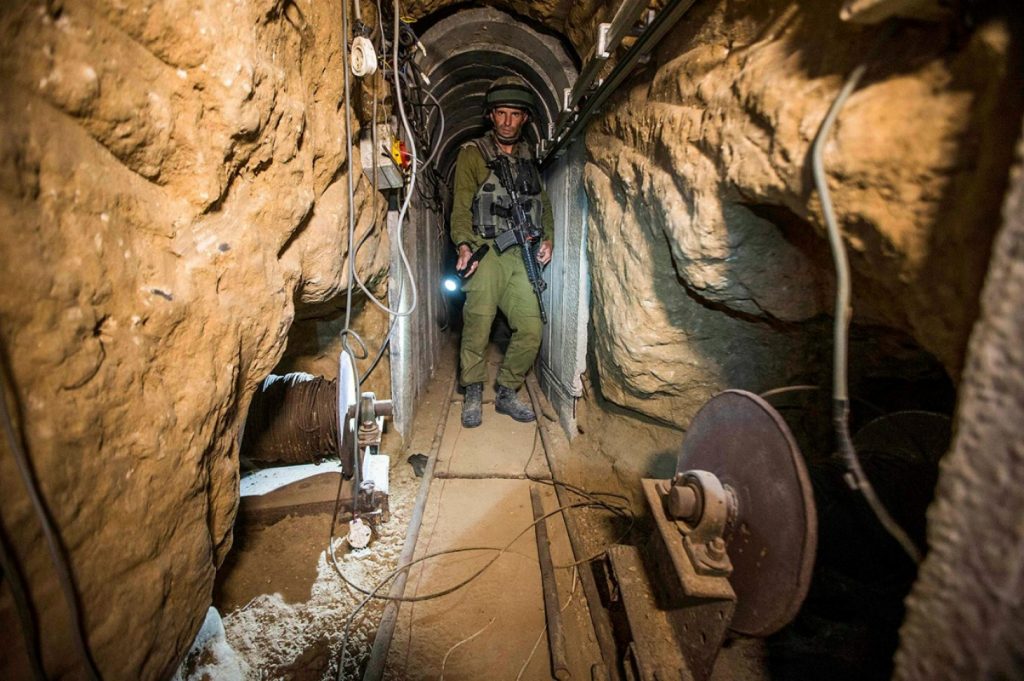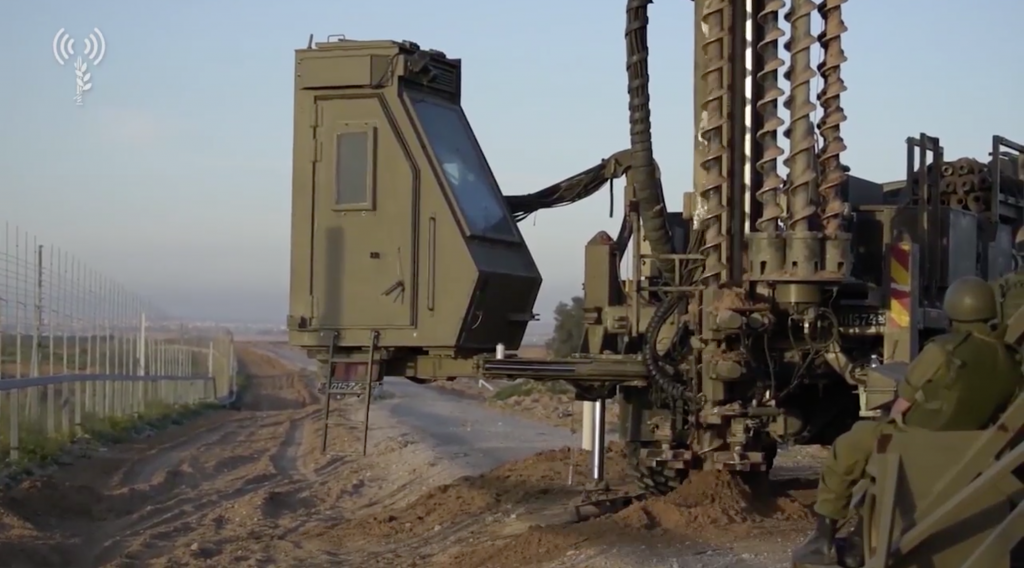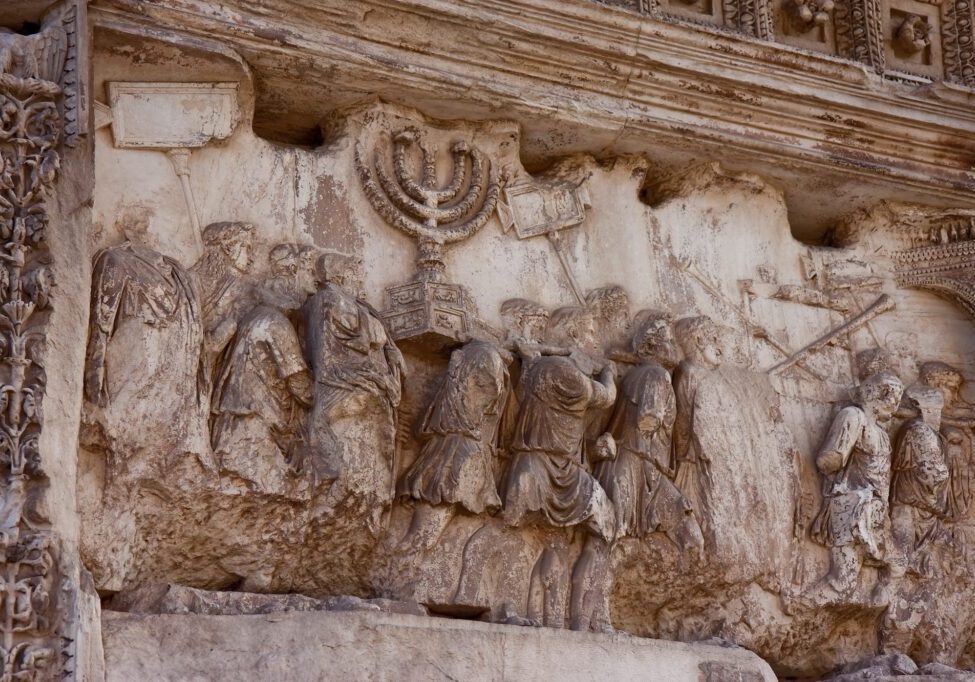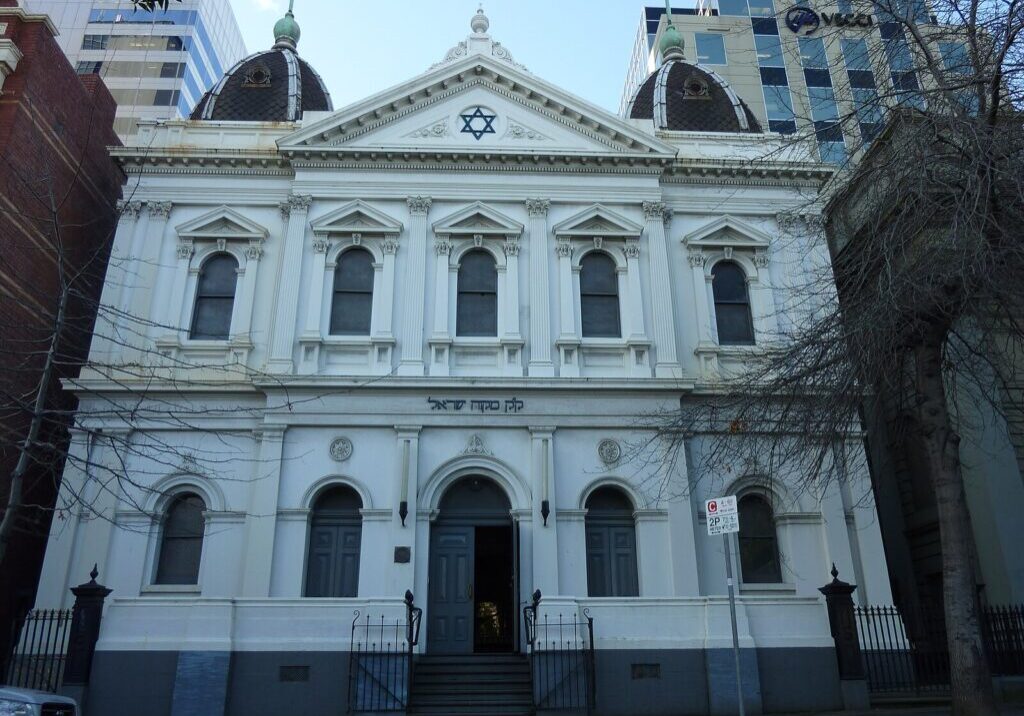Australia/Israel Review
Underground technology
Aug 3, 2018 | Gabrielle Burack

Israel’s strategy to stop Hamas’ terror tunnels
Hamas’ violent takeover of the Gaza Strip in 2007 has left Israel with a series of ever-evolving threats. This includes the recent use of flaming kites and balloons, rockets, and of course, terror tunnels.
Although threats from all these forms of terrorism remain prevalent, Israel has perfected the Iron Dome missile defence system to counter Hamas rocket attacks, while to deal with the “Molotov kites”, the Israel Defence Forces (IDF) is experimenting with various offensive mechanisms to shoot down the flaming weapons.
However, Hamas’ tunnels have proven perhaps the most difficult to counter.
The use of the tunnels is part of Hamas’ goal of seeking the destruction of the State of Israel, and its strategy of murdering Jewish people wherever and whenever possible in service of that goal. Its tunnels are equipped with electricity, food, and military capabilities. According to the IDF, these tunnels meet the purpose to “carry out attacks such as abductions of Israeli civilians and soldiers alike; infiltrations into Israeli communities, mass murders and hostage-taking scenarios.”
Hamas has reportedly been using tunnels to attack Israel since the early 2000s, but their construction and use accelerated around the time of Operation Protective Edge in 2014.
Additionally, the sophistication of the tunnels has evolved over time, but so has the Israeli technology to defeat them – especially since Operation Protective Edge.
In order to better understand the technological innovations Israel is putting into place to counter the threat of Hamas’ terror tunnels, the AIR spoke to three Israeli strategic experts: Dr. Eli Karmon, Dr. Eran Lerman, and Zohar Dromi.
Israel versus Hamas – the big picture
Dr. Eli Karmon, a senior research scholar for the International Institute for Counter-Terrorism at the Interdisciplinary Centre in Herzliya, acknowledges that “Hamas is seen as a threat because it is an organisation, [that] on the one hand, controls Gaza, has a military force with a self identified 30,000 fighters, and on the other hand it politically and ideologically continues to fight for the destruction of Israel.” Further Dr. Karmon notes that Hamas uses tunnels, rockets, and even the sea to harm Israel. The IDF sees this governmental, political, and military threat as a national security priority, and thus believes it is important to counter Hamas with its most advanced capabilities, he says.
By contrast, Dr. Eran Lerman, the former Deputy National Security Advisor to the Israeli Government and Vice President of the Jerusalem Institute for Strategic Studies, argues that, in its face-off with Hamas, the IDF does not fear “a massive military effect (that is not real), but a murderous raid which will demoralise the regional population, coupled with an abduction on a scale that would force our hand releasing thousands of Hamas men.” He emphasises that Hamas is resourceful, and able to make a lot of noise to get attention, whether it is through the media or politically incentivising Israel to release terrorist prisoners.
The evolution of the Tunnel threat
Hamas has different uses for its tunnels. It uses tunnels to smuggle weapons and other items out of Egypt. Hamas has also built offensive and defensive tunnels under Gaza and into Israel that serve multiple purposes. The defensive tunnels are used to store weapons, and to move Hamas’ militant forces around Gaza without being observed and targeted by the IDF’s retaliatory attacks.
The offensive tunnels can be used to set off bombs underneath Israeli territory, although this use tends to be rather costly and imprecise.
Another offensive use of these tunnels is to kidnap Israeli soldiers and keep them as hostages.
Hamas spends hundreds of millions of dollars building these tunnels instead of aiding Gazan civilians who are suffering from a lack of basic resources. According to one calculation, Hamas has built twice the number of tunnels as the North Vietnamese employed during the Vietnam War.
Operation Protective Edge, which featured the IDF’s first major mission to counter Hamas’ terror tunnels, launched on July 8, 2014, came in response to the kidnapping and murder of three Israeli teenagers and a barrage of rockets coming from the Gaza Strip. That conflict lasted over a stretch of 50 days, ending after Egypt, acting as a mediator, repeatedly called for ceasefires that Hamas ultimately broke 11 times. By the end of Operation Protective Edge, the IDF managed to destroy 32 terror tunnels, as well as to intercept 578 of Hamas’ rockets through the use of the Iron Dome.
Although the success of Operation Protective Edge led to the destruction of many tunnels, the tunnel threat continued. In the middle of April 2016, the IDF found and destroyed the first Hamas terror tunnel located since Operation Protective Edge. The IDF later found another cross-border tunnel on May 3, 2016 and another tunnel in late October of 2017. On March 19, 2018, the IDF blew up two more tunnels
Despite Israel’s success in finding and destroying Hamas’ terror tunnels in recent years, the terrorist organisation continues to persevere with them, by rebuilding old tunnels that were neutralised during Operation Protective Edge. This method is apparently much cheaper than building completely new tunnels, although it is thought by the IDF that Hamas is also still building new ones.
What Israelis most fear is that Hamas will use its terror tunnels to attack schools and other civilian areas with explosives, or send militants storming out of the tunnels to open fire inside towns or kibbutzim along the Gaza border. Hamas has not yet managed to successfully target civilians from its tunnels, but has used the tunnels to kill 12 IDF soldiers during the conflict in 2014 and, as mentioned earlier, kidnap soldiers to hold for ransom, most notably seizing Corporal Gilad Shalit in 2006 and holding him for five years.
Israeli Defence Minister Avigdor Lieberman stated on the morning of March 18 that “Israel systematically destroys one Hamas tunnel after the other, thanks to quality intelligence and ground-breaking technology… whoever thinks they can hurt us underground is met with an iron wall.”
Technology as the solution?

The IDF drills a hole into a Hamas tunnel entering Israel prior to destroying it
The main difference between 2014 and now is that Israel is far more aware of the terror tunnel threat and has been able to develop technology to counter Hamas’s tunnel strategy.
The Israeli Government announced in June 2016 the construction of a deep underground metal wall that is intended to prevent and deter more tunnelling. The Commander of the Southern Front, Major General Eyal Zamir, calls this project a “guillotine for destroying tunnels – where the terror tunnels are cut off and deemed completely useless.”
To build the underground barrier, the army is using a German hydromill (a drill that has the capabilities to break through any material). Once the drill reaches the desired depth, the area is filled with bentonite, a substance that turns into an adhesive when it comes in contact with water. The barrier is reportedly intended to stretch the entire 65-kilometre border between Israel and Gaza, and it will be designed with sensors produced by the Israeli defence manufacturer Elbit Systems using technologies that monitor and predict seismic changes. A fence with barbed wire will be built above ground and also have sensors and cameras.
The bentonite underground barrier is combined with large iron cages containing a system of advanced equipment to track the building and usage of tunnels. The barrier also has the ability to fill a threatening tunnel with liquid cement, hence blocking any terror tunnel from infiltrating into Israel. Observation centres will be built near the fence as well. The entire project is expected to cost around US$570 million.
The technology behind the way the IDF is countering Hamas’ terror tunnels is classified, however, Israeli media reports that it includes seismic sensors that detect underground vibrations and can thus locate tunnels. The labs creating the technological innovation for the barrier are making ground-breaking progress to existing counter-tunnel technologies, including technologies to scan for empty space and improvements in mapping techniques.
The soil in and around Gaza is varied, which makes it difficult for even the most complex technology to differentiate between concrete and natural rock, and open spaces that could be tunnels or naturally occurring underground cavities or areas of low density.
Once the IDF’s tunnel trackers appear to have found a terror tunnel, IDF soldiers are sent to investigate whether the suspected tunnel is real.
Dr. Lerman argues that “as in all counterterrorism situations (and other challenges to security) there are no magic solutions and panaceas, but a system of sliding doors: point defence, active destruction of penetrators, passive physical barriers, and ultimately deterrence.” Dr. Lerman adds that although the methods will not remove the threat entirely, they will result in successful conflict management, forcing Hamas to find other methods of confronting Israel.
Costs and benefits of an offensive vs. defensive strategy
Israel’s new technological innovations, which include motion detectors and geological technology to find Hamas’ tunnels, also have the ability to actively destroy or facilitate the destruction of the tunnels, creating an offensive element to what is primarily a defensive project. (The defensive strategy is the barrier itself, both above and below ground, which prevents and discourages the construction of attack tunnels.)
The new anti-tunnel infrastructure surrounding Gaza, and the personnel to man it, are quite costly, as they require a large amount of expensive construction and large numbers of scientists and technicians to work on the relevant technology. However, according to Dr. Karmon, while there is “quite a big cost”, this is balanced by the reality that “destruction on our side is also a huge cost.”
For example, a purely defensive strategy of only fighting if Hamas initiates an attack leads to a likelihood of much higher casualties on the Israeli side. With a strategy with an offensive element (such as the new barrier), the IDF can generally completely prevent an attack from happening, thus saving the lives of both IDF soldiers and civilians along the border.
Zohar Dromi, a former IDF intelligence analyst, agrees with Dr. Karmon that the costs of the offensive technology are great, but that “you must protect your people and must take initiative.”
The Future
The new underground barrier should be finished within a year. Will it end the tunnel threat?
Dr. Karmon is optimistic about the new technologies and believes that the threat of Hamas’ tunnels “will be almost completely neutralised, so that way Hamas won’t even be able to build tunnels through the sea.”
Dromi disagrees with Dr. Karmon that the new counter-tunnel technology will completely eliminate the tunnel problem. He notes that there are still a great number of tunnels coming from Egypt. He says, “Hamas will find a way to overcome the barrier because its sole purpose is to kill Jewish people.” He says countering Hamas’ tunnels will still be a relevant strategic challenge even after the completion of the barrier.
Dr. Karmon further notes that Hamas is starting to lessen its reliance on rockets because their use could provoke a new war.
Israel now needs to develop new ways to counter Hamas’ use of balloons and flaming kites. Because balloons and kites are cheap and can be deployed in large numbers, Hamas believes it is approaching its goal of forcing the citizens of Israel’s south to live in a war zone.
Complete national security only lies in “destroying Hamas and replacing it with the Palestinian Authority,” says Dr. Karmon, but this is something that successive Israeli governments have found too costly and difficult to achieve.
In the meantime, the future of the IDF’s counter-terrorism methods will have to rely heavily on technological breakthroughs on both the offensive and defensive sides. On the defensive side, the IDF must strengthen Iron Dome, which has currently been updated to be able to intercept mortar shells as well as rockets.
The IDF’s Gaza division force will increasingly be solely responsible for the defensive strategy, as the new technologies will make protecting Israel with an offensive strategy less necessary. The Gaza Division’s sole purpose now is to protect the Gaza border communities and the IDF forces stationed in the area. According to a senior IDF officer, “the IDF is more prepared for battle in Gaza than it has ever been, on the offensive aspect as well.”
Meanwhile, Dr. Karmon notes that the Egyptians are also interested in the IDF’s solution to the tunnels because it hurts them as well when Hamas tries to sneak back and forth into Sinai, often cooperating with the ISIS forces in the Sinai peninsula. The Egyptians have managed to destroy 90% of Hamas’ smuggling tunnels, so the future may also see Egypt and Israel increasingly working together to defeat the tunnel threat.
However, new technology will always have flaws and will likely always require ground forces to physically go and check if suspected tunnels detected are actually there.
Conclusion
With new technology in place, it is estimated that within a year, according to the Israeli media and Dr. Lerman, Hamas’ underground battlefront may be on the verge of defeat.
However, other experts, such as Dromi, argue that the tunnel threat will not completely disappear and Hamas will likely find new and innovative means to infiltrate tunnels under Israeli territory.
Nonetheless, the combination of the IDF’s new setup along Gaza to monitor and counter the tunnel situation with the new barrier under construction increasingly appears to be a highly effective, if not a fool-proof solution.
The offensive and defensive strategies associated with the underground barrier have been quite costly, but are generally regarded in Israel as the best solution to ensuring the safety of Israel’s civilians living near Gaza.
The hope is it will provide stability until such time as a change in the situation in Gaza – with the replacement of the violently rejectionist Hamas rule with something more benign – ends the unrest within the region and the constant potential battlefront along the Gaza border.
Tags: Hamas, Israel, Palestinians






